🔍 Decoding Microsoft Azure: Landing Zones Explained 🛬

In my previous Decoding Microsoft Azure post, 🔍 Decoding Microsoft Azure: Understanding Platform, Landing Zones, Workloads, and Utilities ⚙️ , I introduced the house analogy to conceptually explain Microsoft Azure . Part of this analogy covered the Application Landing Zone and the Platform Landing Zone.
In this post, I’ll take a deeper dive into Landing Zones. We’ll explore what they are, how they’re defined by Microsoft, and how I believe we can improve upon the concept. By the end, you’ll have a clearer understanding of Azure Landing Zones and how they fit into a broader cloud adoption strategy.
What is an Azure Landing Zone? – Microsoft’s Definition
There’s no better place to start than the official documentation: What is an Azure landing zone? .
Microsoft defines an Azure Landing Zone as:
An Azure landing zone is an environment that follows key design principles across eight design areas.
These design principles accommodate all application portfolios and enable application migration, modernization, and innovation at scale.
The concept includes Platform Landing Zones and Application Landing Zones:
- Platform Landing Zone:
A platform landing zone is a subscription that provides shared services (identity, connectivity, management) to applications in application landing zones.
- Application Landing Zone:
An application landing zone is a subscription for hosting an application.
The conceptual architecture of this Azure Landing Zone is shown in the following figure:

Confused? Let’s put this into perspective.
Landing Zones in Perspective
Microsoft’s documentation describes the overall architecture as an Azure Landing Zone. However, its depiction extends beyond Azure itself, including elements like Entra ID and automation tooling (e.g., Azure DevOps , GitHub ).
To better reflect its scope, I propose calling this broader concept an Enterprise Cloud Landing Zone. This term accounts for all components depicted while staying conceptually aligned. Here’s a simplified view:
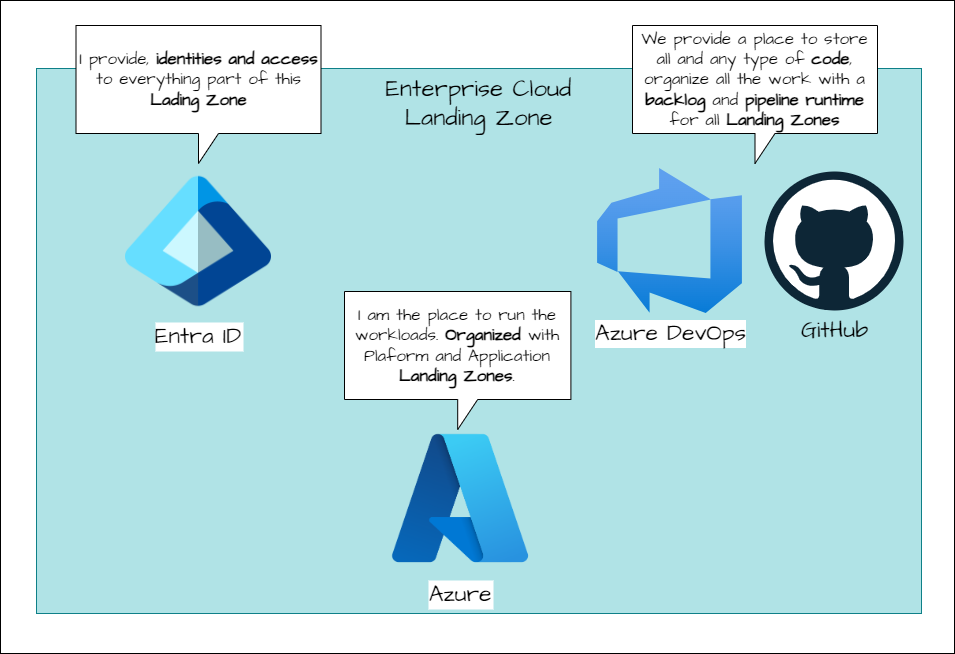
Within this Enterprise Cloud Landing Zone, we see smaller Landing Zones, such as:
- Platform Landing Zones
- Application Landing Zones
However, not all depicted components are part of two these categories. As shown in the following figure:
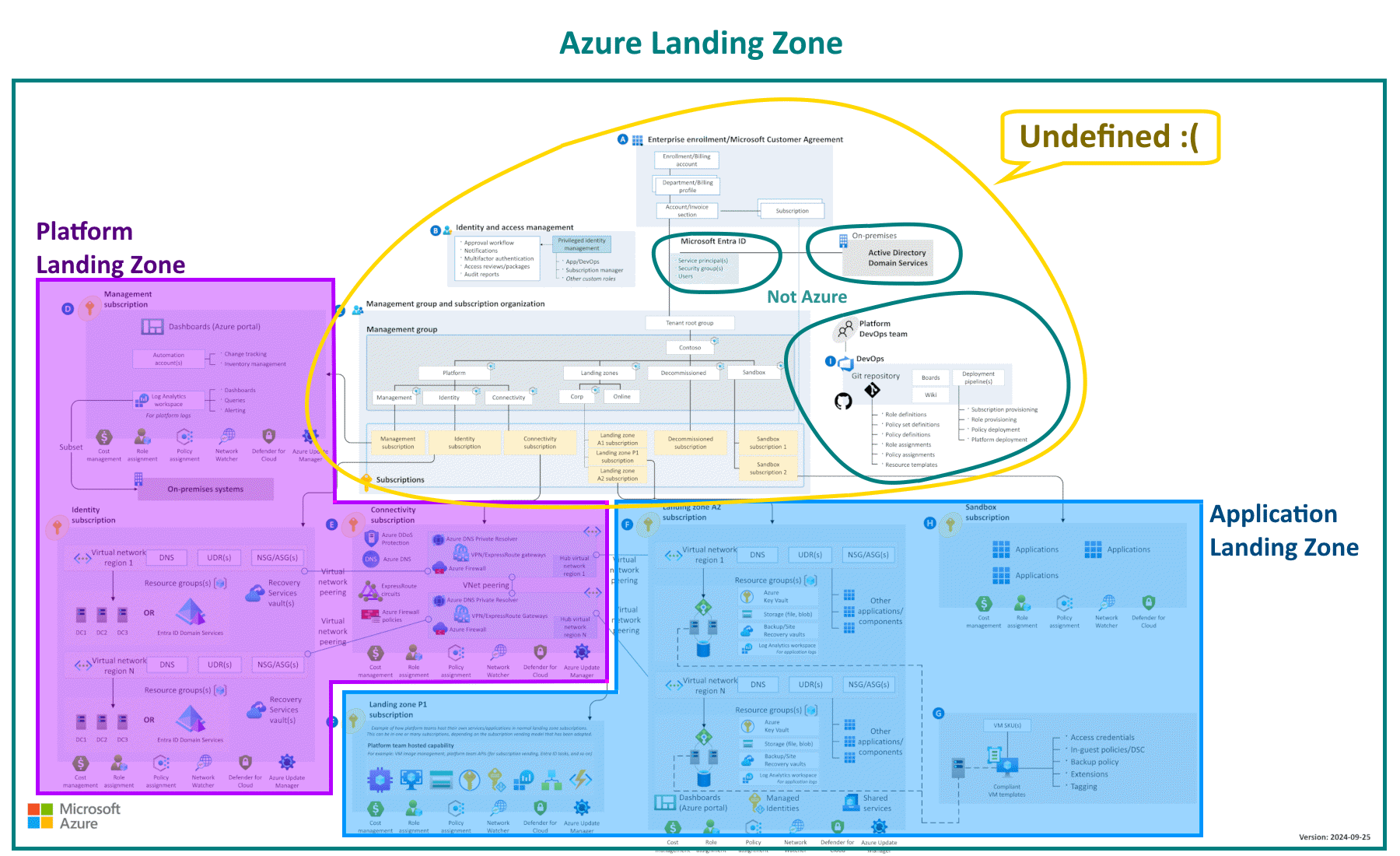
To clarify the Landing Zones within the Enterprise Cloud Landing Zone, I suggest viewing them as patterns, similar to Cloud Design Patterns
. These patterns help organize the conceptual architecture and provide a consistent framework for understanding. The pattern naming compliments the Landing Zone Archetypes
explained in the Microsoft Azure Landing Zone documentation.
Once we establish this perspective, we can introduce the Tenant Landing Zone. This addition expands the concept to encompass all essential components, completing the picture as shown below:
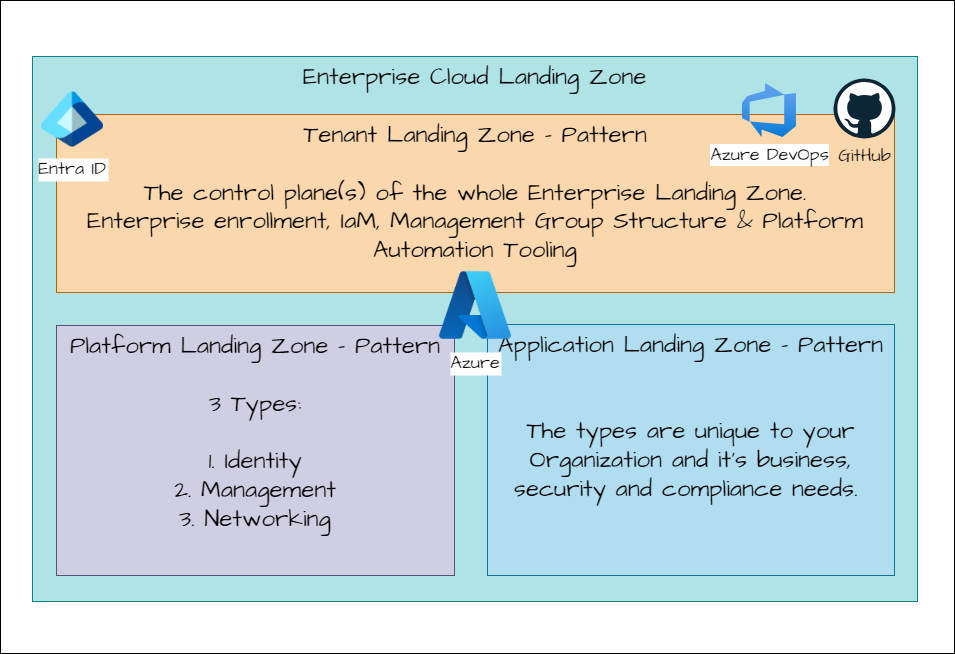
Plotting Patterns to Azure Landing Zones
By overlaying the patterns onto Microsoft’s conceptual architecture, the picture becomes complete and unambiguous:
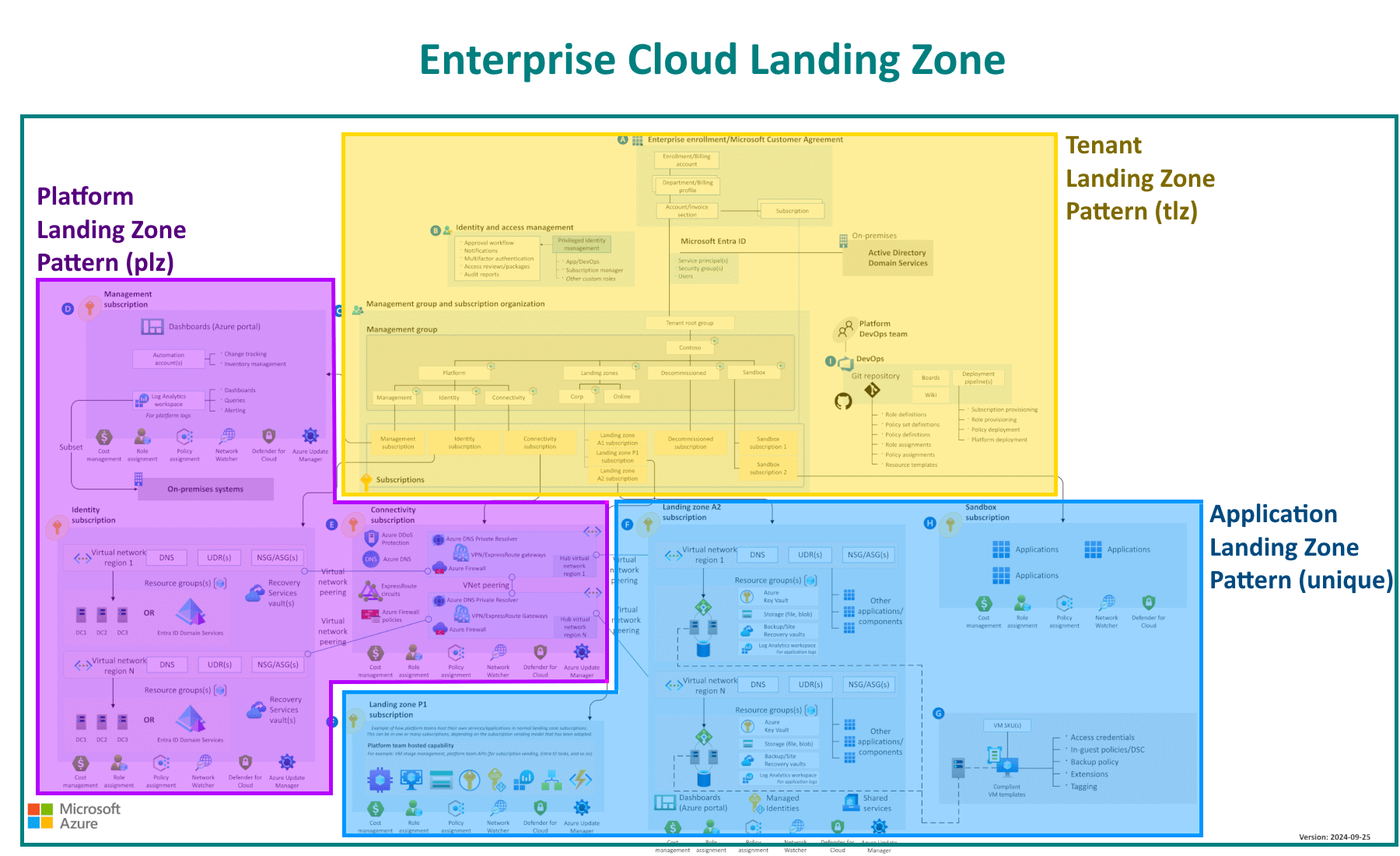
From Patterns to Implementation
Understanding Landing Zones conceptually is just the beginning. Implementation involves aligning these patterns with organizational goals, technical requirements, and governance models. Here’s how each pattern contributes:
- Platform Landing Zone: Provides foundational services, such as connectivity (hub-spoke or mesh), monitoring, and identity management.
- Application Landing Zone: Creates isolated environments for workloads, tailored to specific application needs.
- Tenant Landing Zone: Ensures proper governance and segmentation for managing Entra ID tenants and automation tooling like Azure DevOps* or GitHub .
When implemented effectively, these patterns combined with the archetypes form a scalable and secure foundation for enterprise cloud adoption. The challenge lies in tailoring them to your organization’s unique requirements and trade-offs.
Wrapping Up
Azure Landing Zones are more than just technical constructs—they’re a strategic approach to cloud adoption. By understanding the patterns behind Platform, Application, and Tenant Landing Zones, you can design a cloud environment that meets your needs today and scales for tomorrow.
Remember, a well-designed Landing Zone isn’t just about technology—it’s about aligning people, processes, and tools to create a cohesive enterprise cloud strategy.
I couldn’t resist to wrap this subject up with a meme:
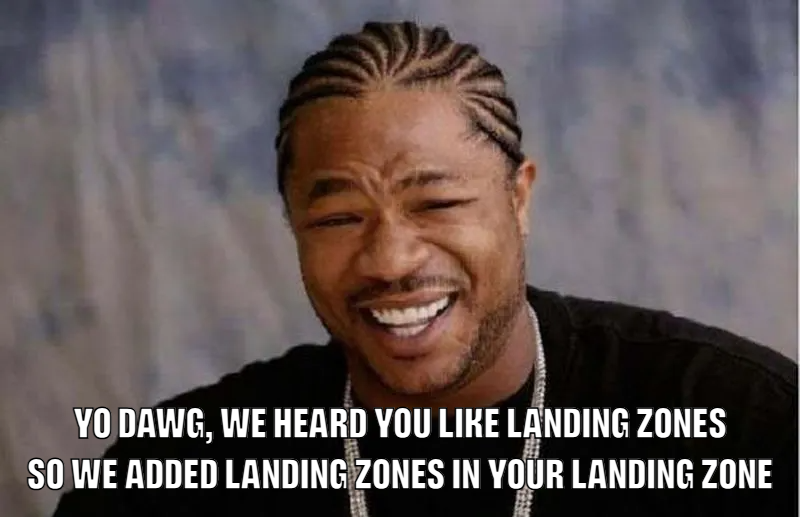
And that’s all, folks! If you found this post insightful, don’t forget to check out my other posts . For reference materials, visit:
- What is an Azure landing zone?
- Azure landing zone design areas and conceptual architecture
- Landing Zone Archetypes
Thanks for reading!